Fish
The Mystery Of Eels: Scientists Are Still Wondering Where They Are From!
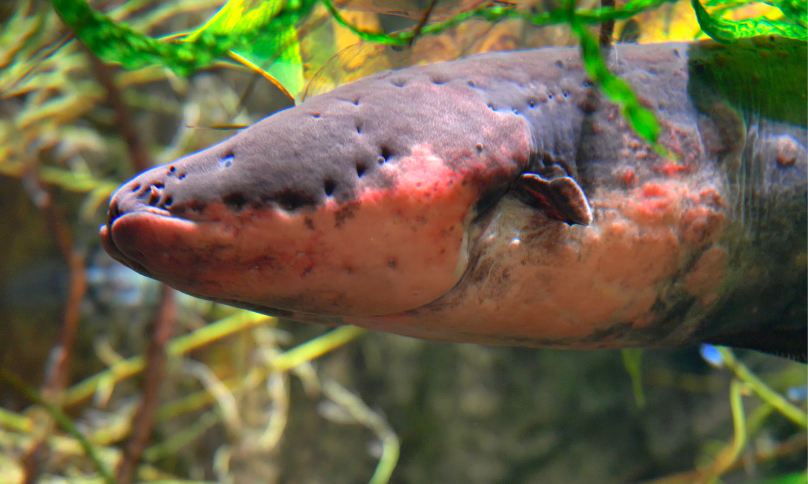
The Mystery of Eels: Scientists Are Still Wondering Where They Are From!
Eels have fascinated and perplexed scientists for centuries with their enigmatic life cycle and mysterious origins. Despite significant advances in marine biology, the precise spawning habits and migratory patterns of eels remain one of nature’s most elusive secrets.
These slippery creatures, particularly the European eel (Anguilla anguilla), undertake an extraordinary journey from freshwater rivers and lakes across Europe to the distant Sargasso Sea in the Atlantic Ocean, where they are believed to spawn.
Yet, despite extensive research efforts, no one has ever witnessed eels spawning in their natural habitat. This enduring mystery continues to captivate researchers and conservationists alike, as they strive to uncover the hidden truths of these remarkable fish and ensure their survival in an ever-changing world.
1). Eels continue to be a mystery to scientists.
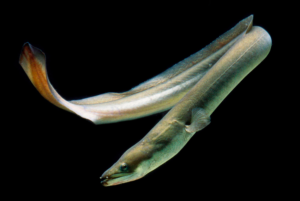
Scientists have been attempting to really figure out how eels reproduce for decades because they haven’t been able to catch them in the process of reproduction. There have been numerous possibilities proposed, but none of them has ever been verified; now, it appears that we may have finally found an answer to this decades-old mystery.
2). Aristotle referred to them as “Earth Worms.”
When it comes to eels, the famed Greek philosopher Aristotle authored the first piece on the subject, and he had an extremely interesting hypothesis about where they came from.
He claimed that they came to life due to precipitation and muck mixing. Although we now understand that it is nearly impossible for someone to simply “appear” out of nowhere, it is nonetheless intriguing to consider how they were perceived in the past.
3). There are more than 800 different species.
Eels are members or family of the Anguilliformes order, which comprises eight suborders and 111 genera, accounting for an astonishing total of 800 species in the world.
It’s almost unfathomable to imagine hundreds of species in the world that we are aware of right now. Perhaps in the future, even more species will be identified and described.
4). The world’s oldest eel lived to be 155 years old.
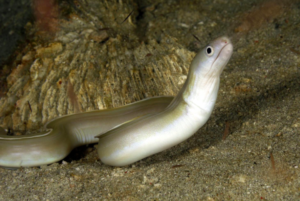
That is correct; you read that correctly. It is believed that this eel lived for at least 155 years and was kept in a well in Sweden.
It was extremely usual back then to keep eels in wells since they helped keep the water clean by removing algae and other bugs from the water. According to the town, ale was poured into that well around 1859.
5). Some are not Eels: Electric, Spiny, Deep-Sea Spiny Eels
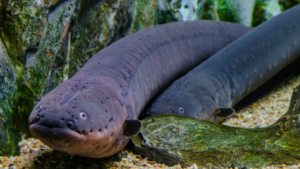
Electric eels are without a doubt the most well-known of all the eels. Who hasn’t heard of these fascinating critters that are capable of producing electricity? Being able to do this is very cool.
Given the fact that there are 800 different species, it is not surprising that they all have distinct physical characteristics. While some of them can grow approximately 4 meters long (such as the slender giant Morley), the one-jawed eel is the shortest of the bunch.
6). The Struggle of the Electric Eels: Their Poor Vision
They have weak eyesight since they are aquatic organisms that dwell in dark and muddy water environments. A weak electric signal is used instead of traditional radar to locate prey and even mate for the first time for them.
When they track down their target, they employ a more powerful shock to gain control over them.
7). Translucent Eels Are Way Cooler Than You Think!
The Leptocephalus eels, which are translucent in appearance, are also known as translucent eels. A translucent body is merely a stage: when an eel is still a larva, its bodies are transparent!
This is because they are transitioning from larva to adulthood. It is possible to examine their organs, and they appear to be plain creatures with little organs and a simple tube for a digestive system, among other things.
Their teeth also have the appearance of fangs, and they retain them until the end of their metamorphosis.
8). They are Both in saltwater and freshwater environments
In terms of distribution, eels are quite widespread, and you can readily find them in both freshwater and saltwater habitats. On the other hand, the majority can be found in saltwater, but don’t be astonished if you come across one in freshwater.
Aside from that, they will go thousands of kilometers only to duplicate the process. The European eel migrates from its native freshwater habitat into the Sargasso Sea to return with babies.
9). Eels are essential in maintaining the cleanliness of our waters.
Eels are extremely significant for a variety of reasons. First and foremost, they contribute to the control of other animal populations. They are both prey and predator, and both are necessary for a healthy and balanced environment to function properly.
Another vital function of eels is to maintain the cleanliness of the water. Unfortunately, some eel species are on the verge of extinction, and some are already extinct!
10). Eels are a favorite ingredient in Japanese cuisine.
In Japan, the eel is a favorite delicacy, and the Japanese eel, to be more specific, is extremely popular throughout this Asian country. The freshwater eel, also known as unagi, is considered to be a summer delicacy in Japanese culture.
For many years, the Japanese have been overfishing, and in recent years, this has resulted in a crisis in the market, which has resulted in an exponential spike in the price of seafood.
11). There are no detectable reproductive organs in their bodies.
Reverting back to the notion that they are still enigmatic animals, Scientists have been baffled for decades because their reproductive organs are not visible to the naked eye. Researchers were captivated by this for a long time, and they wanted to understand more about eels and discover where they were coming from.
12). In all seriousness, where do eels come from?
According to some estimates, eels have been around for more than 145 million years. By comparing the anatomy of larval and adult fossil eels, it was discovered that they were closely related.
To think that they have been around for such a long time and that it has only been in the last few decades that we have been able to unravel their secret is fascinating. There have been numerous hypotheses put up, and now we have an answer to where eel babies originate from.
For the most part, they migrate from North America and Europe to the Sargasso Sea, where they randomly mate with one another and then return to North America and Europe with their offspring.
13). Eels are a fantastic source of omega-3.
While they are fairly delectable and well-liked worldwide, it is important to note that they also contain several extremely beneficial elements. Eel has 838 mg of omega-3 fatty acids per 100 grams of flesh.
Omega-3 fatty acids are extremely beneficial to the human body since they can help lower the chance of developing heart-related health problems.
14). Threats to Eels include parasites, birds, mammals, and large fish.
While they have a predatory character and are carnivorous, they can also be cannibalistic in their behavior. On the other hand, eels are eaten by larger fish or, in some situations, by mammals such as raccoons, who prefer to eat eels over other fish.
We must not forget that people are the most significant predator of eels. As previously stated, many species of eels have been overfished due to overfishing by humans.
15). Eels are now considered to be an endangered species.
These enigmatic species have become critically endangered in the last few decades, which is a sad state of affairs. For example, the European eel is regarded to be critically endangered, and its population has dropped so well by as much as 90 percent in recent years.
It appears that the Japanese eel is faring a little better, and they are merely threatened as a species at this time.
Questions People Also Ask:
What is the mystery surrounding the origin of eels?
The primary mystery surrounding eels, specifically the European eel (Anguilla anguilla), lies in their spawning habits. Scientists know that eels migrate to the Sargasso Sea in the Atlantic Ocean to spawn, but the exact locations and processes involved in their spawning remain unknown. Despite extensive research, no one has ever observed eels spawning in the wild.
How do scientists study eels and their migration patterns?
Scientists study eels through various methods, including tagging and tracking their movements using satellite technology, genetic analysis, and studying their physical characteristics at different life stages. These methods help researchers understand the eels’ long migration routes and the environmental factors influencing their behavior.
Why is it challenging to observe eels spawning in the wild?
Observing eels spawning in the wild is challenging due to several factors:
- Distance and Depth: Eels migrate thousands of kilometers to deep, remote areas of the ocean, making it difficult for researchers to follow and observe them.
- Timing: The precise timing of eel spawning is unknown, making it hard to predict when and where to conduct observations.
- Life Cycle: Eels undergo a complex metamorphosis during their life cycle, transitioning from larvae to adults, which adds another layer of complexity to studying their spawning behavior.
What are the implications of the mystery of eels for conservation efforts?
The mystery of eels has significant implications for conservation efforts. Understanding their spawning habits and migration patterns is crucial for developing effective conservation strategies. Overfishing, habitat loss, and climate change threaten eel populations, and without a clear understanding of their life cycle, it is challenging to implement measures to protect and restore their populations effectively.
Have there been any recent breakthroughs in eel research?
Recent breakthroughs in eel research include advancements in tracking technology, which have provided more detailed data on their migration routes and behavior. Genetic studies have also shed light on the diversity and population structure of eels. However, the exact locations and mechanisms of eel spawning in the Sargasso Sea remain elusive, and ongoing research aims to solve this enduring mystery.
We appreciate you for taking the time to read!
Finally, we hope you found this article interesting? And what do you think about ”The Mystery Of Eels: Scientists Are Still Wondering Where They Are From!?”
Please you should get in touch with us if you want to contribute to this article or advertise.
And let us know if you observe something that isn’t quite right.

Fish
Unlocking the Secrets of Goldfish Longevity: How Long Do Goldfish Live?
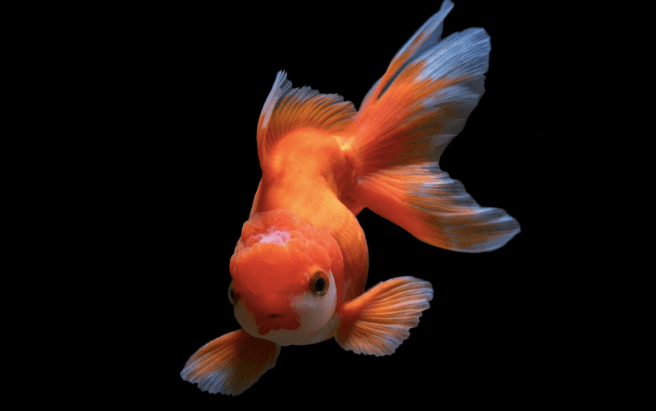
Unlocking the Secrets of Goldfish Longevity: How Long Do Goldfish Live?
Goldfish are one of the most popular and beloved pets around the world. With their vibrant colors and graceful swimming, they bring beauty and tranquility to any home or office aquarium.
But have you ever wondered how long these fascinating creatures can live?
In this article, we will explore the lifespan of goldfish and provide you with valuable insights to help you care for your aquatic companions.
Factors Affecting Goldfish Lifespan
The lifespan of goldfish can vary significantly depending on several factors. While some goldfish may live for only a few years, others have been known to live for several decades. Here are the key factors that influence the lifespan of goldfish:
1. Genetics
Just like humans, the genetic makeup of goldfish plays a crucial role in determining their lifespan. Some goldfish breeds are naturally hardier and have a longer lifespan, while others may be more prone to genetic health issues that can shorten their life expectancy.
2. Water Quality
Providing a clean and well-maintained environment is essential for the health and longevity of goldfish. Poor water quality, such as high levels of toxins or inadequate oxygenation, can significantly impact their lifespan. Regular water changes and proper filtration systems are crucial to ensure optimal water conditions.
3. Diet and Nutrition
A balanced and nutritious diet is vital for the overall health of goldfish. Feeding them a variety of high-quality commercial fish food, supplemented with occasional treats like vegetables or live food, can help support their immune system and promote a longer lifespan.
4. Tank Size and Environment
The size of the tank and the overall living environment have a direct impact on the well-being of goldfish. Providing enough space for them to swim and grow is essential. Overcrowding can lead to stress, poor water quality, and increased susceptibility to diseases, ultimately shortening their lifespan.
Average Lifespan of Goldfish
On average, goldfish can live anywhere between 10 to 15 years. However, with proper care and optimal conditions, some goldfish have been known to live up to 20 years or even longer. It’s important to note that the lifespan of goldfish can vary depending on the factors mentioned above.
Longevity Records of Goldfish
While the average lifespan of goldfish is around 10 to 15 years, there have been exceptional cases of goldfish living much longer. Here are a few notable records:
1. Tish, the Goldfish
Tish, a goldfish from the United Kingdom, held the record for the longest-lived goldfish. She lived for an impressive 43 years before passing away in 1999. Tish’s longevity was attributed to her owner’s meticulous care and a healthy environment.
2. Goldie, the Carassius auratus
Goldie, a goldfish from Australia, made headlines when she celebrated her 45th birthday in 2005. Her owner, who had inherited her from his grandmother, ensured she received excellent care and a spacious tank to thrive.
3. Fred, the Goldfish
Fred, a goldfish from the United States, lived for an astounding 41 years. His owner diligently maintained his tank, providing him with a balanced diet and a stress-free environment.
Tips for Extending Your Goldfish’s Lifespan
If you want your goldfish to live a long and healthy life, here are a few tips to keep in mind:
- Provide a spacious tank with ample room for swimming.
- Maintain clean water by performing regular water changes.
- Invest in a reliable filtration system to keep the water properly oxygenated.
- Feed your goldfish a balanced diet of high-quality fish food.
- Avoid overfeeding, as it can lead to obesity and health issues.
- Monitor the water temperature to ensure it remains within the recommended range for goldfish.
- Keep an eye out for any signs of illness or distress and seek veterinary care if needed.
By following these guidelines and providing your goldfish with the care they need, you can help ensure they live a long and fulfilling life.
Conclusion
Goldfish are captivating creatures that bring joy and serenity to their owners. With proper care and attention to their needs, goldfish can live for many years, becoming cherished members of the family.
Remember to consider the genetic factors, water quality, diet, and tank size when caring for your goldfish. By providing them with a healthy and nurturing environment, you can maximize their lifespan and create a thriving aquatic habitat.
We appreciate you for taking the time to read this article!
Finally, we hope you found this article interesting? And what do you think about ”Unlocking the Secrets of Goldfish Longevity: How Long Do Goldfish Live?!?”
Please feel free to share or inform your friends about this article and this site, thanks!
And let us know if you observe something that isn’t quite right.
Fish
Unlocking the Secrets to Goldfish Longevity: A Comprehensive Guide
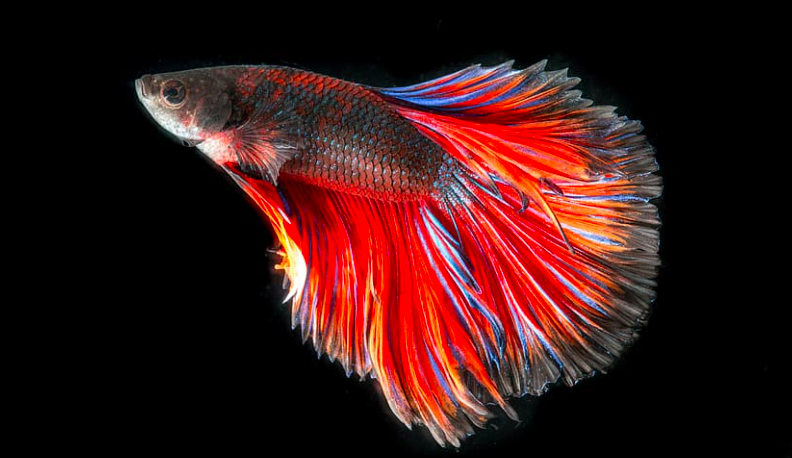
Unlocking the Secrets to Goldfish Longevity: A Comprehensive Guide
Goldfish enthusiasts, buckle up! Today, we dive deep into the fascinating world of goldfish longevity, uncovering the secrets to ensuring your aquatic companions live their happiest, healthiest, and longest lives.
Whether you’re a seasoned goldfish aficionado or a newbie to the aquatic realm, this guide will equip you with the knowledge to keep your underwater friends thriving.
Understanding the Basics: What Influences Goldfish Longevity
Goldfish, those shimmering aquatic companions adorning our homes, bring a touch of serenity to our lives. However, ensuring the longevity of these mesmerizing creatures goes beyond just feeding them regularly.
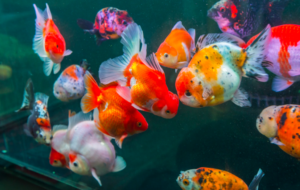
In this deep dive into the world of goldfish care, we unravel the essential factors that influence their longevity.
1. Choosing the Right Environment
Creating a conducive habitat for your goldfish is paramount. Start with an adequately sized aquarium, allowing at least 20 gallons per fish.
Proper filtration is equally crucial, maintaining water quality and reducing stress. Remember, a stress-free goldfish is a healthy goldfish.
2. Water Quality Matters
The phrase “as happy as a fish in water” holds true only when the water quality is optimal. Regular water changes, maintaining appropriate pH levels, and investing in a reliable water testing kit are indispensable practices.
These actions contribute significantly to the overall well-being and longevity of your goldfish.
3. Nutritious Diet for Longevity
Just like any pet, a goldfish’s diet plays a pivotal role in its overall health and longevity. Provide a well-balanced diet that includes high-quality flakes, pellets, and occasional treats like live or frozen brine shrimp. Avoid overfeeding, as it can lead to health complications.
4. Adequate Space for Growth
Goldfish have the potential for substantial growth. Stunting, a common issue, occurs when they are kept in cramped environments. Ensure your goldfish have enough space to grow naturally, promoting a healthier and longer life.
5. Companionship and Tank Mates
Goldfish are social creatures, and companionship can positively impact their mental well-being. However, not all fish make suitable tank mates. Research and carefully choose compatible species to avoid stress and potential conflicts.
6. Regular Health Check-ups
Prevention is better than cure, even in the underwater world. Conduct regular health check-ups, examining your goldfish for signs of illness. Promptly address any issues to prevent the spread of diseases, ensuring a longer and happier life.
7. Temperature Control
Maintaining a stable water temperature is crucial for goldfish longevity. Fluctuations in temperature can lead to stress and susceptibility to diseases. Invest in a reliable aquarium heater and monitor the temperature consistently.
8. Genetics and Breeding
The genetic makeup of your goldfish plays a vital role in determining its lifespan. Opt for reputable breeders to ensure healthier genetics. Moreover, responsible breeding practices contribute to the overall well-being of goldfish populations.
9. Environmental Enrichment
Goldfish, despite their calm demeanor, benefit from environmental enrichment. Incorporate decorations, plants, and hiding spots in the aquarium. This not only adds aesthetic value but also provides mental stimulation for your aquatic friends.
10. Regular Observations and Interaction
Understanding your goldfish requires regular observations. Take time to interact with your aquatic companions, learning their behavior patterns. Early detection of any deviations from normal behavior can be instrumental in preventing potential health issues.
Common Mistakes to Avoid: Pitfalls in Goldfish Care
Embarking on the journey of goldfish care is a rewarding experience, but pitfalls lurk along the way. To ensure the well-being and longevity of your aquatic companions, let’s delve into the common mistakes that many unwitting enthusiasts often make.
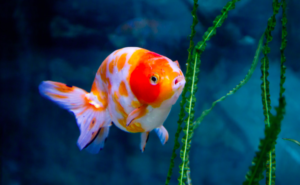
1. Overcrowded Tanks: The Space Conundrum
One prevalent mistake is underestimating the space goldfish require. Overcrowded tanks lead to stress, stunted growth, and increased vulnerability to diseases. Ensure your goldfish have ample space to swim and grow by following appropriate stocking guidelines.
2. Neglecting Water Quality: A Silent Menace
Perhaps the most critical factor in goldfish care is water quality. Neglecting regular water changes, failing to monitor pH levels, and overlooking filtration systems can result in poor water quality. This, in turn, jeopardizes the health and longevity of your goldfish.
3. Inappropriate Tank Mates: The Compatibility Quandary
While companionship is beneficial, selecting incompatible tank mates can lead to aggression, stress, and even injury. Research thoroughly to identify suitable tank mates, considering size, temperament, and environmental preferences.
4. Overfeeding Woes: Too Much of a Good Thing
The adage “less is more” holds true in goldfish feeding. Overfeeding not only pollutes the water but also contributes to health issues like swim bladder disorder. Follow a balanced feeding schedule and avoid the temptation to shower your goldfish with excessive treats.
5. Inconsistent Temperature Control: The Rollercoaster Effect
Goldfish thrive in stable environments. Fluctuating temperatures can stress your aquatic friends and make them susceptible to diseases. Invest in a reliable aquarium heater and maintain a consistent water temperature within the recommended range.
6. Lack of Observation: Ignoring Behavioral Cues
Neglecting to observe your goldfish regularly can result in late detection of health issues. Changes in behavior, appetite, or swimming patterns may indicate underlying problems. Stay vigilant and address any deviations promptly.
7. Poor Diet Choices: Nutritional Neglect
Goldfish need a well-balanced diet for optimal health. Relying solely on one type of food or feeding inappropriate treats can lead to nutritional deficiencies. Consult with experts or veterinarians to create a nutritionally balanced diet for your goldfish.
8. Overlooking Tank Maintenance: The Dirty Dilemma
A clean tank is a happy tank. Neglecting regular maintenance tasks such as cleaning filters, removing debris, and scrubbing algae can compromise water quality and create an unhealthy environment for your goldfish.
9. Ignoring Genetic Factors: The Breeder’s Impact
Choosing a goldfish from a reputable breeder is crucial. Poor breeding practices can result in genetic predispositions to illnesses and shorter lifespans. Research breeders and opt for those known for responsible breeding.
10. Skipping Quarantine: A Preventive Measure
Introducing new fish without quarantine can introduce diseases into your aquarium. Always quarantine new additions to monitor their health before introducing them to the main tank, preventing potential outbreaks.
Health Check: Identifying and Addressing Goldfish Ailments
Goldfish, with their dazzling scales and captivating swim, are delightful pets. However, even the most dedicated owners can encounter health challenges.
In this guide, we delve into the art of identifying and addressing common goldfish ailments to ensure your finned friends lead long and healthy lives.
1. Recognizing Signs of Illness
Understanding your goldfish’s normal behavior is the first step in identifying health issues. Watch for changes in appetite, swimming patterns, coloration, and the appearance of fins or scales. Any deviations from the norm may be indicative of an underlying problem.
2. Common Goldfish Ailments
a. Ich (White Spot Disease): This prevalent parasite manifests as small white dots on the skin, fins, and gills. Quarantine affected fish, gradually raise the water temperature, and treat with a suitable medication.
b. Fin Rot: Recognized by ragged fins or tail, fin rot is often caused by poor water quality. Improve water conditions, remove any decaying matter, and administer antibiotic treatments as necessary.
c. Swim Bladder Disorder: Affecting buoyancy, swim bladder issues result in floating or sinking. Adjust feeding habits, offer a diet with more fiber, and consider a temporary fasting period.
d. Dropsy: Characterized by swollen body and scales, dropsy indicates internal organ failure. Isolate the affected fish, enhance water quality, and consult a vet for antibiotics.
3. Proactive Measures for Preventing Illness
a. Maintain Water Quality: Regular water changes, proper filtration, and monitoring water parameters are fundamental in preventing a myriad of health issues.
b. Quarantine New Additions: Before introducing new fish to your aquarium, quarantine them to prevent the spread of potential diseases.
c. Balanced Diet: Provide a varied and nutritious diet to boost the immune system. Avoid overfeeding, as it can lead to digestive problems.
d. Adequate Space: Avoid overcrowding in the tank, as it can stress fish and contribute to the spread of diseases.
4. Consulting a Vet: When and Why?
Knowing when to seek professional help is crucial. If home remedies prove ineffective or if the condition worsens, consult a vet experienced in aquatic animal care. Early intervention can make a significant difference in your goldfish’s recovery.
5. Isolation and Medication
When you notice signs of illness, promptly isolate the affected fish to prevent the spread of diseases. Follow the recommended dosage of medications, and complete the treatment course even if the fish appears to recover sooner.
6. Stress Management
Goldfish are sensitive to changes in their environment. Minimize stress by maintaining a stable environment, avoiding sudden changes, and providing adequate hiding spots.
Conclusion: Nurturing the Fountain of Youth for Goldfish
In the delicate dance of goldfish care, the key to unlocking the fountain of youth lies in our hands. By avoiding common pitfalls, embracing proper nutrition, and crafting a haven of harmony, we bestow upon our aquatic companions the gift of vitality.
As custodians of their underwater world, our choices ripple through their scales, shaping a narrative of joy, longevity, and the timeless beauty found in a well-tended aquarium.
Here’s to the enduring health and happiness of our finned friends, and the shared moments that unfold within the watery embrace of their home.
Frequently Asked Questions (FAQs)
Can goldfish live in bowls?
Goldfish need ample space to thrive. Bowls are too small and lack proper filtration, leading to poor water conditions and health issues. Opt for a spacious tank instead.
How often should I feed my goldfish?
Feed your goldfish small, regular meals 2-3 times a day. Monitor their consumption and adjust accordingly to prevent overfeeding.
Are goldfish hardy pets?
While goldfish are hardy, they require proper care. Neglecting their needs can result in health issues. With the right care, they make resilient and long-lived companions.
Do goldfish get bored?
Yes, goldfish can get bored. Introduce toys, mirrors, and novel elements to their environment to keep them mentally stimulated.
Can I keep different goldfish breeds together?
Compatibility is crucial. Research the specific needs and temperaments of different goldfish breeds before introducing them to the same tank.
Embrace these insights, and you’ll be well on your way to unlocking the secret to goldfish longevity. Your aquatic friends will thank you with a lifetime of joy and vibrant underwater adventures.
Note: This article is not intended as veterinary advice. Consult with a qualified professional for specific concerns regarding your goldfish’s health.
We appreciate you for taking the time to read this article!
Finally, we hope you found this article interesting? And what do you think about ”Unlocking the Secrets to Goldfish Longevity: A Comprehensive Guide!?”
Please feel free to share or inform your friends about this article and this site, thanks!
And let us know if you observe something that isn’t quite right.
Fish
Best Tank Mates for Betta Fish: A Beginner’s Guide

Curating a harmonious aquarium for your betta fish involves choosing compatible tank mates that ensure a tranquil environment.
Bettas, with their flamboyant fins and solitary nature, require companions that respect their space and don’t compete for dominance. This beginner’s guide highlights the best tank mates that align with the betta’s need for peace and stability.
By selecting the right fish, you’ll not only enhance your betta’s wellbeing but also foster a vibrant and diverse aquatic ecosystem.
Remember, keeping a well-balanced tank is not just about aesthetics, it’s crucial for maintaining the health and happiness of all your finned friends.
Understanding Betta Fish Behavior
As a beginner, understanding the unique personality of your finned friend is critical to choosing the perfect tank mates. Let’s delve into the behavior of betta fish to set the stage for a peaceful aquarium environment.
Territorial Nature Of Betta Fish
Betta fish, also known as Siamese fighting fish, are renown for their territorial instincts. These fish often guard their space fiercely against intruders. Recognizing this trait is key. It helps prevent unwelcome confrontations in your tank.
- Males are particularly territorial.
- Display aggressive behaviors like flaring fins and gill covers.
- Small spaces amplify this nature.
Compatibility Factors To Consider
Selecting tank mates for your betta involves careful consideration. Not all fish or aquatic animals are suitable companions.
| Factor | Description |
| Temperament | Choose peaceful species that won’t provoke your betta. |
| Size | Opt for similar sized fish to prevent bullying. |
| Activity Level | Active fish may stress bettas; opt for calmer species. |
Importance Of Tank Size And Layout
A spacious tank is non-negotiable for a harmonious habitat. Smaller tanks increase tension and stress for your betta.
Good tank layout features ample hiding spots and plants. This helps diffuse tension among inhabitants.
- Opt for tanks 10 gallons or larger.
- Include caves and foliage for retreats.
- Avoid cramped conditions.
Top Tank Mate Options
Finding the perfect companions for your Betta fish calls for care. Some critters live well with Betta fish. Let’s explore the top tank mate options to make your aquarium a peaceable kingdom.
Snail Species
Bettas and snails make a great team. Snails are hardy and keep to themselves. They help clean the tank too. Look at these snail friends for your Betta:
- Nerite Snails: They eat algae and don’t breed in freshwater.
- Mystery Snails: These come in bright colors and move around a lot.
Shrimp Varieties
Shrimp can share a tank with Bettas. They are peaceful and clean up leftovers. Check out these shrimp types:
- Ghost Shrimp: Clear bodies and are good cleaners.
- Cherry Shrimp: Red color may attract Bettas, so watch them.
Neon Tetras
Neon Tetras are small and speedy. They shimmer and swim in groups. They need friends, so keep them in fives or more:
- They brighten up the tank.
- Neon Tetras avoid Betta territory.
Corydoras Catfish
Cory Catfish are peaceful bottom-dwellers. They clean up the tank and don’t bother Bettas. They are best in small groups:
- Pygmy Cory: Small and agile, perfect for a Betta tank.
- Panda Cory: Distinctive look and peaceful nature.
Rainbowfish
Rainbowfish are vibrant and active swimmers, adding a burst of color to your aquarium. Like Neon Tetras, they thrive in a group, so consider keeping them in a school of five or more:
- Their iridescent scales create a stunning display.
- Rainbowfish prefer a peaceful community tank.
- Provide a well-planted environment to mimic their natural habitat.
- Avoid aggressive tank mates, as Rainbowfish can be somewhat timid.
- Keep the water quality in check, as Rainbowfish are sensitive to changes.
Avoiding Common Mistakes
Setting up a peaceful home for your betta fish means avoiding some common pitfalls. Knowing what to steer clear of will ensure a harmonious tank. Let’s dive into the key mistakes to avoid while selecting tank mates for your betta.
Overcrowding The Tank
Bettas cherish their space. They thrive in a calm, uncrowded environment.
Stick to the one-inch-of-fish-per-gallon rule for a happy tank. Keep an eye on the tank’s size and don’t add too many fish.
- A 5-gallon tank suits one betta and a few small tank mates.
- Upgrade the tank if you plan to welcome more buddies.
Selecting Aggressive Species
Bettas are known for their feisty nature.
Choosing the right tank mates is critical to avoid stress and fights.
| Safe Choices | Risky Choices |
| Snails | Tiger Barbs |
| Shrimps | Cichlids |
| Corydoras | Male Bettas |
Introducing New Tank Mates
You’ve decided to diversify your aquarium with some new friends for your Betta. However, introducing new tank mates is a delicate process that requires patience and attention to detail to ensure peace and harmony in your underwater realm.
Acclimating The New Fish Or Invertebrates
The initial step is acclimation. This helps your new tank mates adjust to their environment smoothly. Here is a simple guide:
- Isolate the new arrival in a separate container.
- Float this container in the tank to match temperature (avoid shock).
- Gradually introduce tank water to the container every 10 minutes (adjust chemistry).
- After an hour, gently release the new mate into the tank (stress-free transition).
Ensure to watch for signs of stress or discomfort.
Monitoring Behavior And Interactions
Keep a close eye on your Betta and its new companions. Look for:
- Chasing or nipping – may indicate stress.
- Hiding – a sign of fear or aggression.
- Peaceful swimming – a good sign of acceptance.
Remember, patience is key! Some fish or invertebrates may need a few days to settle. Provide plenty of hiding spaces and visual barriers to help ease the tension.
Tank Setup Tips
When it’s time to decorate your betta fish aquarium, keep your finned friend and their future tank mates in mind. A well-set-up tank means happier, healthier fish and less stress for everyone involved.
Ideal Tank Size For Betta And Tank Mates
Bettas need space to swim and thrive, especially when sharing their home. Go for a tank that can hold at least 10 gallons of water. This gives everyone plenty of room. Below, find the ideal setup:
| Tank Capacity | Bettas Only | With Tank Mates |
| 5 gallons | Yes | No |
| 10 gallons | Better | Minimum |
| 20+ gallons | Best | Recommended |
Creating Hiding Spots And Territories
Hiding spots offer safety and reduce stress. Use plants and decorations to create these areas. Here’s what works well:
- Live plants: They improve water quality.
- Smooth rocks: Great for resting spots.
- Caves: Provide secure hiding.
Divide the tank into territories. Each fish should have a space to call their own.
Proper Water Parameters For A Community Tank
Maintain ideal water conditions to keep the tank healthy. Here’s what to aim for:
- Temperature: 76-80F (24-27C)
- pH Level: 6.5-7.5
- Water Hardness: 3-4 dKH
Regularly test the water to ensure these parameters stay consistent. Use a water testing kit every week.
Conclusion
Selecting the right companions for your betta fish can ensure a harmonious tank. Remember, peaceful, non-nipping species create the best environment for your betta.
By choosing tank mates that thrive in similar conditions, your aquatic habitat will not only flourish but also become a serene underwater retreat.
A well-balanced community tank equals happy, healthy bettas and friends.
Questions People Also Ask: (FAQs)
What are the best tank mates for Betta fish?
Betta fish, known for their vibrant colors and flowing fins, can coexist harmoniously with certain tank mates. Ideal companions include peaceful and non-aggressive species such as small schooling fish like neon tetras, harlequin rasboras, or Corydoras catfish. Avoid aggressive or fin-nipping species to maintain a tranquil environment.
Can Betta fish live with other types of fish?
Yes, Betta fish can share a tank with other species, but compatibility is key. Peaceful community fish that inhabit different levels of the tank, such as bottom-dwellers or mid-level swimmers, are generally the best choices. Always monitor the interactions and be ready to separate them if any aggression arises.
Are there specific considerations when choosing tank mates for Betta fish?
Absolutely. Tank mates for Betta fish should share similar water parameter requirements, especially in terms of temperature and pH. Additionally, ensure that the tank is adequately sized with plenty of hiding spots and visual barriers to reduce stress and territorial disputes. Always research the specific needs of each species.
Can Betta fish live with other Betta fish?
It’s generally not advisable to house male Betta fish together, as they tend to be territorial and aggressive towards each other. However, female Betta fish can coexist peacefully in a group known as a sorority, provided the tank is spacious enough and has plenty of hiding spots to establish a hierarchy without aggression.
What precautions should be taken when introducing tank mates to a Betta fish?
When introducing new tank mates, it’s crucial to monitor their interactions closely. Begin with a quarantine period for the new fish to ensure they are healthy and disease-free. Introduce them to the tank gradually, allowing the Betta fish to acclimate to their presence. Be prepared to separate them if signs of aggression or stress emerge. Regular observation and a well-thought-out tank setup contribute to a successful community aquarium.
We appreciate you for taking the time to read this article!
Finally, we hope you found this article interesting? And what do you think about ”Best Tank Mates for Betta Fish: A Beginner’s Guide!?”
Please feel free to share or inform your friends about this article and this site, thanks!
And let us know if you observe something that isn’t quite right.
-

 Pet Care2 years ago
Pet Care2 years agoThe Best Dog Collars For 2022
-

 Dogs2 years ago
Dogs2 years agoBichon Frise: The Happy, Playful, and Cuddly Companion
-

 Trending Pet Stories1 year ago
Trending Pet Stories1 year ago2023 ‘World’s Ugliest Dog’ Winner: Scooter’s Tale of Resilience
-

 Animals2 years ago
Animals2 years agoAre There Animals Having Down Syndrome?
-

 Pets2 years ago
Pets2 years agoThe Fascinating World Of The Red Chameleon
-

 Dogs2 years ago
Dogs2 years agoTop 10 Most Popular Dog Breeds According To AKC.
-

 Dogs2 years ago
Dogs2 years ago21 Dog Breeds That Resemble Bears Or Teddy Bears!
-

 Dogs2 years ago
Dogs2 years agoEskimo Dogs from Canada – What Are They? – Find Out!






